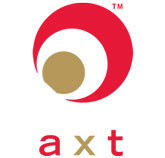- News
13 June 2013
Smartphones to account for nearly half of both 802.11ac and 802.11ad chipset shipments in 2018
The growth in devices conforming to the IEEE standards 802.11ac and 802.11ad will occur in very different ways, with 802.11ac exploding into devices (including smartphones) from the start, while 802.11ad will see a more modest and staggered growth, forecasts ABI Research’s Wi-Fi Research Service in its latest report on ‘Wi-Fi Semiconductors: 802.11ac, MIMO, and 802.11ad’.
ABI says that 802.11ac is being pushed into smartphones by key carriers’ device requirements that are in sync with 802.11ac hotspot plans for more robust Wi-Fi offloading. “The push towards 11ac adoption overpowers the minor additional cost of dual-band 802.11n/802.11ac chipsets that will be used in smartphones,” says research director Philip Solis. “Perhaps surprising even to industry insiders, we will likely see 2x2 802.11ac implementations in smartphones in a few years,” he adds.
The proportion of various 802.11ac-enabled products will remain relatively consistent from 2013 to 2018, with smartphones making up 40% of those in 2013 and 46% in 2018, where over 3.5 billion Wi-Fi chipsets with 802.11ac will ship, the firm forecasts. The Wi-Fi Alliance is just about to start certification of products using the protocol, yet shipments have started and are already on track to distribute hundreds of millions this year. 802.11ac finally pushes Wi-Fi more towards the 5GHz spectrum, which is cleaner and allows the much larger channel sizes that enable greater speeds and capacity.
802.11ad will phase from larger to smaller products, starting from peripherals and larger non-handset mobile devices and shift to smaller and thinner devices over time, says ABI. 802.11ad will make its way into smartphones in 2015, changing the proportion of 802.11ad-enabled products compared with prior to 2015. Smartphones will account for nearly half of all 802.11ad-enabled products in 2018, though with less than half the volume in smartphones compared to 802.11ac, forecasts ABI. Even so, over 1.5 billion chipsets with 802.11ad will ship in 2018. 802.11ad pushes Wi-Fi into higher-speed, lower-power personal area networking that will be used simultaneously with other Wi-Fi protocols.
“As the complexity of Wi-Fi increases, heading towards tri-band 802.11n/802.11ac/802.11ad chipsets, interesting design tradeoffs can be made to optimize for cost, size, and functionality,” notes Solis. “Choices can be made around the support of 80MHz or 160MHz channel and MIMO configurations based on whether or not 802.11ad is included,” he adds. “Smaller antennae arrays can also be used to save space.”
www.abiresearch.com/research/service/wi-fi






